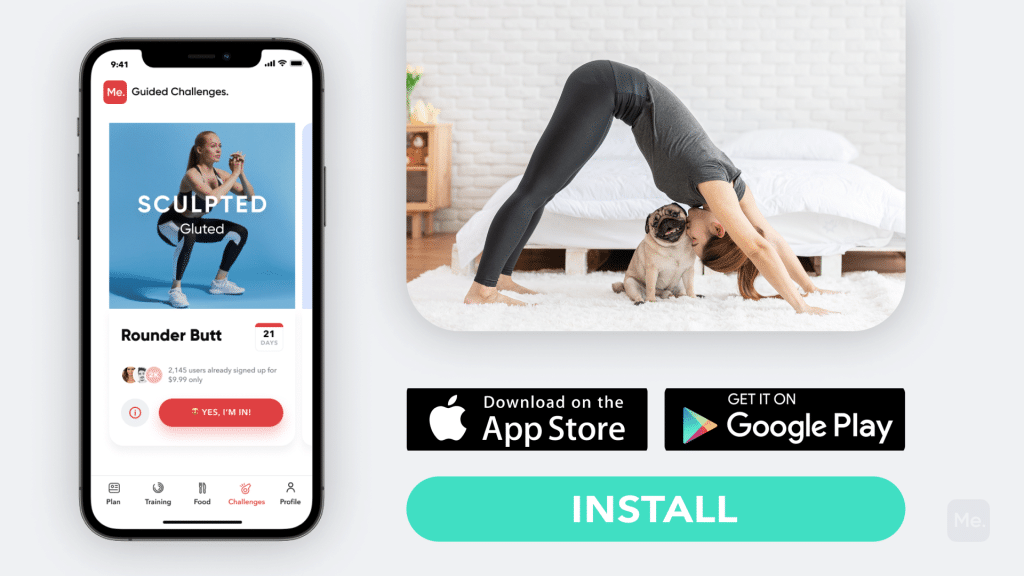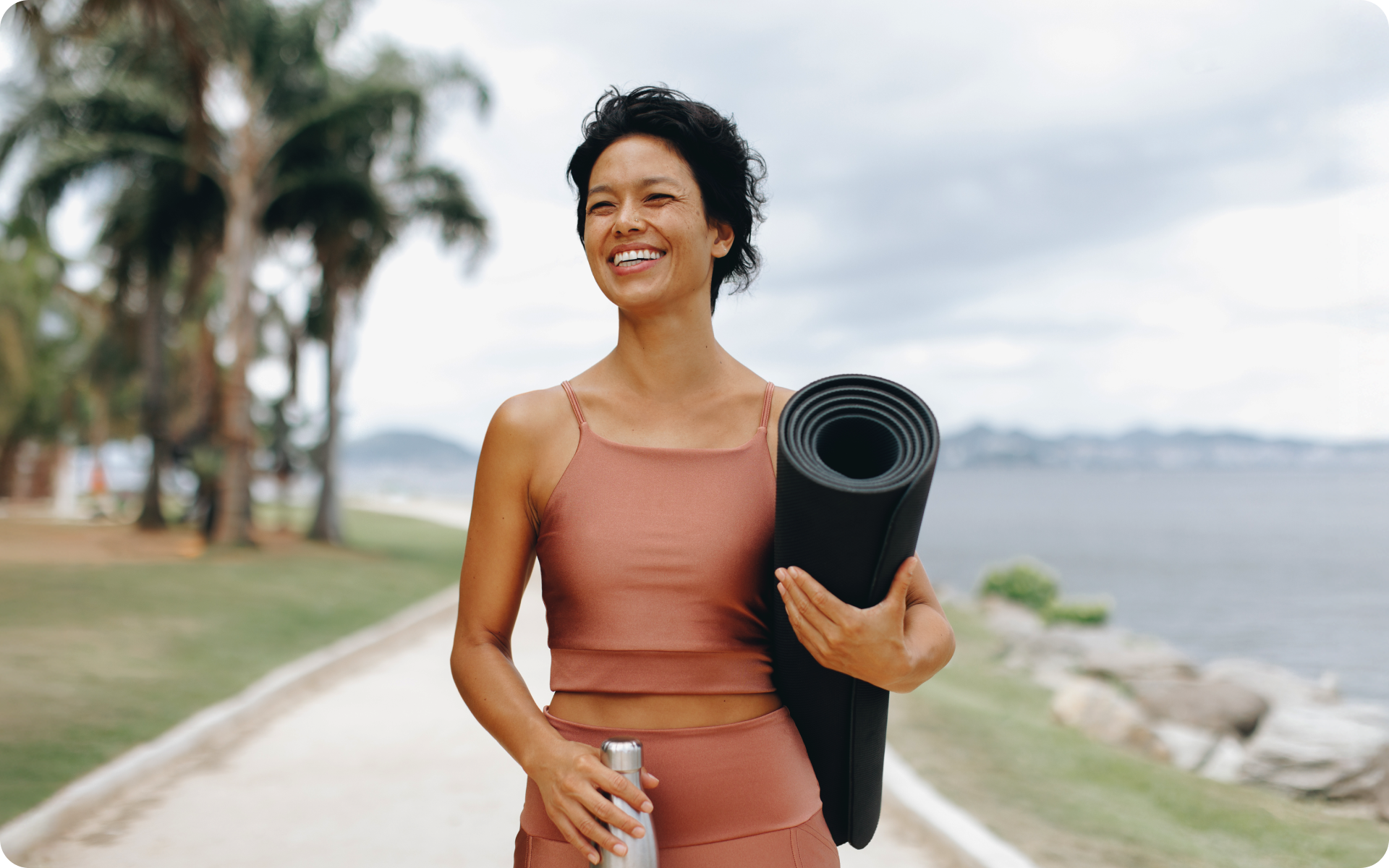You’ve probably heard the term mobility being thrown around by trainers at your gym or other fitness enthusiasts. You might prioritize it in your routine or not; either way, you get the sense that it’s important – and it is!
Get your personalized
meal plan!
It’s crucial to have good mobility if you want to execute moves with proper form and avoid injuring yourself while working out. But to develop mobility, you must first understand the difference between flexibility and mobility.
The majority of people assume that mobility and flexibility are the same when in reality they are two distinct concepts. In this article, we will explore the difference between mobility and flexibility and why it matters. We will also look into how these concepts determine your fitness and how you can improve them.
What Is Mobility?
Before we get into the difference between flexibility and mobility, it’s important to understand what mobility actually is. Mobility simply refers to your range of motion (ROM). It measures the degrees to which you can move a joint without pain (7).
If something were limiting your ROM, you wouldn’t be able to bend that particular joint through its full range of motion. For example, if you have tight shoulders, then it may be difficult or even impossible for you to touch your shoulder blades together behind your back. This is because they’re incredibly stiff and inflexible due to numerous factors like lack of blood flow or immobility caused by previous injuries or inactivity (3).
Read More: Mobility Exercises: What Are They, Their Advantages & Examples To Add To Your Routine
What Are The Benefits Of Mobility?
Having a good range of motion has the following benefits:
Prevents Injury
One of the most important benefits of good mobility is the prevention of injury (9). Many people, in their quest for better fitness and less body fat, neglect to train their flexibility in favor of strength training or cardiovascular exercise.
Eventually, they pay the price by injuring themselves when they try to go beyond what their current mobility allows them to do. With mobility, adequate endurance, and proper breathing techniques, you can push yourself further than your normal limits allow, but it takes time to develop these skills.
Improves Posture
Without strong muscles around the joints, it’s difficult to maintain good posture (5). When the joints move in what is considered a normal range of motion, it’s easy for surrounding muscles to support them, which helps you avoid slouching and other poor habits.
Increases Ease Of Movement
When you’re mobile enough to use your full range of motion with basic movements like walking and bending over, you won’t have to expend as much effort in getting things done. This can come in handy when performing everyday activities that require strenuous body movement, such as chasing after kids or caring for elderly people.
Reduces Stress
Dynamic movements that demand mobility can have a stress-relieving effect. If you’re not mobile enough to do these movements, your body becomes more rigid and inflexible. When this happens, muscles tense up, which leads to stress and eventually pain (2).
Improves Joint Mobility In Old Age
Mobility tends to decrease as we age (1). If you want to make sure that your joints retain their flexibility even when you get older, the best approach is prevention. Start living a healthy lifestyle now by sleeping well at night and exercising during the day so that you’ll be able to enjoy moving with ease for years to come.
If you wish to cinch your waist, tone up your bat wings, blast away the muffin top – our fitness app was created to cater to all your needs! BetterMe won’t give excess weight a chance!
What Is Flexibility?
Flexibility is the degree to which a muscle can be stretched. Flexibility is developed over time through the use of stretching techniques. As you keep your muscles in an extended state for longer periods, your body will adapt by naturally increasing its flexibility.
This increased flexibility is crucial when it comes to performing exercises with proper form because it allows you to move deeper into different positions without straining or injuring yourself (8).
Which Benefit Comes With Flexibility?
Flexibility is useful for improving mobility. You need enough flexibility in your muscles to obtain functional and sport-specific mobility.
However, being flexible alone is not enough to get the most out of your fitness routine. You can stretch your body into all kinds of positions, but if you can’t control your range of motion, you may not be able to get the most out of certain movements.
It’s why the exercise mobility vs. flexibility vs. strength debate has no clear winner. You must strengthen your muscles, improve your coordination and control your range of motion all at once. One way to do all of these at the same time is by increasing your mobility.
Read More: Pilates For Men: Why And How You Should Engage In These Strength Building Exercises
What Are The Methods To Increase Mobility?
Mobility is important, and flexibility is a part of that. That is not to say that you must work out for one extra hour every day. A continuous flow of flexibility and mobility exercises into your routine can make a world of difference.
Here are some methods to increase mobility:
Stretching
Stretching allows your muscles room to elongate. When you stretch properly, you increase the ROM that your muscles and tendons can go through (4).
Dynamic Warm-Up
Dynamic stretching is a common workout technique made to warm up your muscles and joints before exercise. This type of warm-up will help improve the blood flow in all areas of your body so that you perform at optimal levels during exercise or regular activities.
It can be functional and mimic the movements of the activity or sport you’re about to perform, such as circling your arms if you’re about to go swimming.
Here are some simple dynamic stretches that can improve your mobility:
Hip Circles
To do these:
- Stand on one leg.
- Keep your back straight and your core tensed.
- Move the other leg in a circular motion around the standing foot by bending at the knee and rotating from side to side.
- Try for 15 seconds in each direction, then switch legs and repeat.
Arm Circles
To do these:
- Stand with your feet shoulder-width apart.
- Hold your arms out to the side at shoulder height.
- Circle around your arms slowly, starting with small circles, then working up to larger ones.
- Perform 20 circles. Reverse the direction of the circles and perform 20 more.
Lunge With A Twist
To do these:
- Step your left leg far back into a lunge.
- Twist to look over your right shoulder.
- Then, twist farther to raise your arms toward the ceiling in line with the movement of the shoulders.
- Return to the starting position and repeat on the other side. Repeat ten times on each side.
BetterMe is your fast-track ticket to a long-lasting weight loss! Tailor your fitness journey and maximize your results with just a couple of swipes!
Arm Swings
To do these:
- Stand with hands at sides so that they’re even with your hips.
- Lift arms in front of you until they are parallel to the ground and form a 90-degree angle with upper arm and forearm, palms facing down for both movement phases (upward & downward).
- For the upward arm phase, swing forward while exhaling; inhale while swinging arms back.
- For the downward arm phase, swing backward while exhaling; inhale while swinging arms forward.
- Perform 15 reps in each direction.
Spinal Rotations
To do these:
- Sit upright, back against the wall, and feet flat on the floor about shoulder-width apart
- Use your abs to rotate your upper body to one side then the other, maintaining a straight spine and keeping your hips firmly against the wall.
- Hold for 8 seconds on each side. Repeat three times total.
Myofascial Techniques
Myofascial techniques focus on working out kinks and other abnormalities in your deep fascia bands and connective tissues (6). These techniques are often used by physical therapists, chiropractors, massage therapists, athletes, dancers, and others who engage in strenuous activities with their bodies.
Mobility Drills
Mobility drills help improve coordination, balance, and proprioception. They’re especially beneficial for athletes who perform highly mobile activities such as martial arts, gymnastics, and dance.
Mobility drills can be as simple as trying to touch your toes or putting your hands on the ground and standing back up. They can also be more complex movements that require coordination, balance, and control of your body.
The Bottom Line
In general, having good mobility helps you achieve a fit body with less chance of injury. Being flexible goes a long way in enabling mobility. To have both, a good dynamic warm-up before your workout is essential. Various stretches will help get you ready for exercise and promote mobility, coordination, and balance.
DISCLAIMER:
This article is intended for general informational purposes only and does not address individual circumstances. It is not a substitute for professional advice or help and should not be relied on to make decisions of any kind. Any action you take upon the information presented in this article is strictly at your own risk and responsibility!
SOURCES:
- Age-related mobility loss is joint-specific: an analysis from 6000 Flexitest results (2013, nih.gov)
- Benefits of Stretching (2019, sdstate.edu)
- Causes of joint stiffness differ between older and younger adults, study shows (2020, medical.net)
- CURRENT CONCEPTS IN MUSCLE STRETCHING FOR EXERCISE AND REHABILITATION (2012, nih.gov)
- Effect of an exercise program for posture correction on musculoskeletal pain (2015, nih.gov)
- Myofascial Release as a Treatment for Orthopaedic Conditions: A Systematic Review (2013, nih.gov)
- The Difference between Mobility and Flexibility (2021, batonrougeclinic.com)
- The Impact of Flexibility Training on Performance (2015, acefitness.org)
- The Relationship Between Range of Motion and Injuries in Adolescent Dancers and Sportspersons: A Systematic Review (2018, nih.gov)














